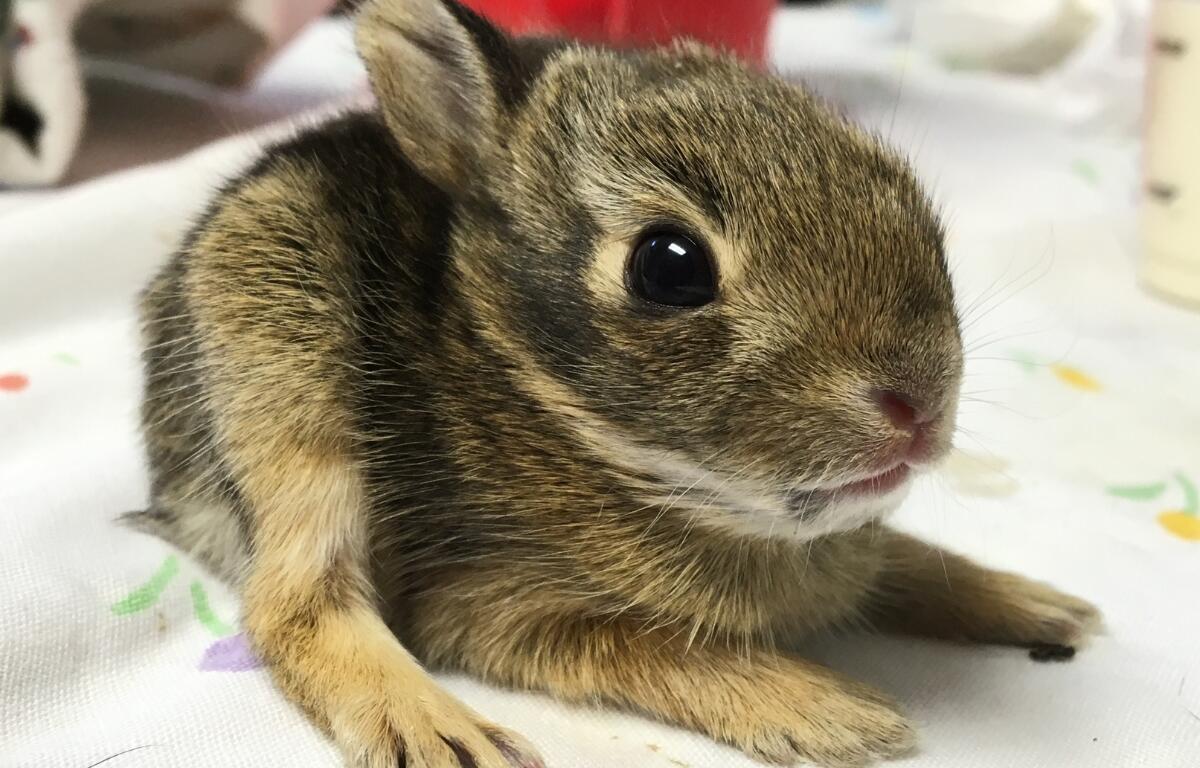WAYNESBORO, VA (Wildlife Center of Virginia) — In the past month, the Wildlife Center has admitted more than 80 wild animals injured by free-roaming domestic cats. These patients represent only a small fraction of the wildlife harmed by outdoor cats each year. Sadly, the chances of survival for these animals are often very low—even seemingly minor bites or scratches can introduce dangerous bacteria, leading to infections that are fatal without immediate treatment.
To shed light on this ongoing issue, the Center is sharing the stories of several recent patients recovering from cat-related injuries.
One of the most recent admissions an Eastern Cottontail, pictured above, was brought to the Center from Charlottesville on June 11 after being found pinned beneath the paw of an outdoor cat. Although the veterinary team found no visible injuries, the rabbit was started on a precautionary course of antibiotics—standard protocol due to the risk of infection from cat encounters.
“Even if we don’t see obvious wounds, that doesn’t mean they aren’t there,” said Dr. Karra, the Center’s Director of Veterinary Services. “Cat-inflicted injuries are often tiny, pinpoint punctures that are difficult to detect. That’s why we initiated antibiotic treatment.”

Young songbirds are also frequent victims. The Center is currently caring for 10 fledglings injured or orphaned by outdoor cats, including Gray Catbird #25-1998 and Northern Mockingbird #25-2118.
Gray Catbird #25-1998 was rescued from Staunton, Virginia, after both of its parents were killed by a cat. The fledgling was too young to survive on its own and was admitted for supportive care—showing how cat attacks ripple beyond just the immediate victims.
Northern Mockingbird #25-2118 arrived just days later after it was captured by a cat. The bird’s rescuers initially placed it in a tree, but it fell to the ground and was brought in for care. The vet team found several puncture wounds on the mockingbird’s hip.
“Because cat-inflicted wounds can be so subtle, any wild animal caught by a cat should be brought to a permitted wildlife rehabilitator,” said Dr. Karra. “Even those that appear uninjured can decline rapidly—sometimes within just 24 hours.”

Mammals and birds aren’t the only victims. On May 28, the Center admitted Eastern Fence Lizard #25-2102—a relatively uncommon patient—after the lizard was caught by a cat in Palmyra, Virginia. Though it appeared unharmed, a careful inspection revealed tiny punctures. Like the other patients, the lizard was started on a preventative antibiotic regimen.
The Center does its best to help these patients recover, but even with prompt treatment, the odds of survival are slim—roughly 70 to 80 percent of cat-caught patients don’t make it.
Beyond the risks to wildlife, the Center also warns of the dangers faced by the cats themselves. Vehicles, predators, toxins, disease, and severe weather all pose constant threats to free-roaming cats. Indoor cats, by contrast, live significantly longer and healthier lives.
“We’re not anti-cat—many of us, myself included, are devoted cat owners,” says Dr. Karra. “But we can’t ignore the significant impact cats have on wildlife. Keeping cats indoors protects native species and keeps our pets safe. It’s truly a win-win.”
To support cat owners in transitioning cats indoors, the Center offers a wealth of resources and guidance on its website. And for cats that find it difficult to adjust, an outdoor “catio” provides a great compromise—letting cats safely enjoy the outdoors while protecting local wildlife.
To learn more about how outdoor cats impact native animals—and what you can do to help—visit the Center’s page: The Case for Indoor Cats.




